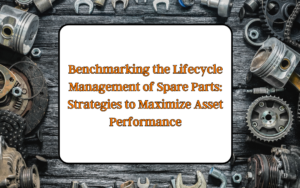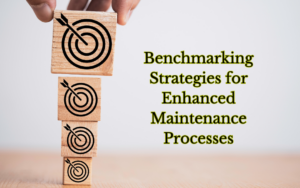Enterprise Asset Management (EAM) and Computerized Maintenance Management Systems (CMMS) play a pivotal role in ensuring the seamless operation of industries by managing assets and maintenance processes. However, a significant challenge looms over these systems— the lack of standards and consistency. This deficiency poses a critical obstacle in recognizing the true criticality of assets and maintenance tasks, leading to operational inefficiencies and potential risks.

The Landscape of EAM/CMMS Systems:
The EAM/CMMS landscape is vast and varied, with numerous software solutions available in the market. Unfortunately, the absence of universally accepted standards has resulted in a lack of consistency across these systems. Each software provider may use different terminology, data structures, and methodologies, making it challenging for organizations to establish a standardized approach to asset management.
The Conundrum of Criticality:
Criticality assessment is a fundamental aspect of EAM/CMMS systems, helping organizations prioritize maintenance tasks and allocate resources effectively. However, the absence of standardization complicates the process of determining criticality. Without a consistent framework, organizations struggle to define and measure criticality uniformly, leading to discrepancies in decision-making and resource allocation.
Challenges Arising from Inconsistency:
- Data Integrity Issues: Inconsistent data structures and nomenclature across different EAM/CMMS systems result in data integrity challenges. Merging data from disparate systems becomes a Herculean task, leading to inaccuracies in criticality assessments.
- Interoperability Concerns: Organizations often use multiple EAM/CMMS systems for different departments or functions. The lack of interoperability standards makes it difficult for these systems to seamlessly communicate and share critical information, hindering a holistic view of asset health.
- Training and Skill Gaps: With different systems utilizing unique interfaces and workflows, organizations face challenges in training personnel consistently. Employees may struggle to adapt to varied systems, leading to errors in data input and, consequently, flawed criticality assessments.
- Decision-Making Delays: Inconsistency in criticality assessment hampers the decision-making process. Organizations may delay critical maintenance tasks or allocate resources inefficiently, jeopardizing overall operational reliability.
The Call for Standards and Consistency:
To address these challenges, the industry needs to advocate for standardized frameworks in EAM/CMMS systems. Establishing common data structures, terminology, and interoperability standards would streamline criticality assessments, allowing organizations to make informed decisions and enhance overall operational efficiency.

The lack of standards and consistency in EAM/CMMS systems poses a significant hurdle in recognizing asset criticality. As industries continue to rely on these systems for effective asset management, the call for universally accepted standards becomes more urgent. A collaborative effort within the industry is essential to pave the way for a more consistent, interoperable, and efficient EAM/CMMS landscape, ultimately ensuring the reliability and sustainability of critical assets.
How Can We Help You?
HubHead’s benchmarking service can provide valuable support. Our experienced consultants have helped numerous companies achieve excellence through comprehensive benchmarking analysis that provides a roadmap to operational excellence. To learn more about how we can help you, contact us to book a demo or download our brochure.
Benchmarking the Lifecycle Management of Spare Parts: Strategies to Maximize Asset Performance
Benchmarking Strategies for Enhanced Maintenance Processes
Benchmarking Strategies to Unlock the Full Potential of EAM/CMMS Information
Share this article




